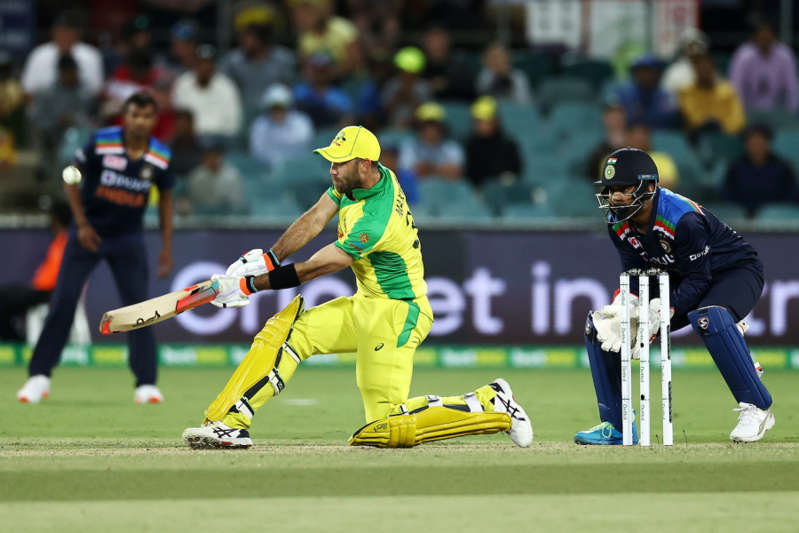I often get emails asking for ODI analyses of some sort and others that say I’m partial to Tests and don’t do enough on the ODI format. When I look over what I have done, say, over the past 12 months, I have to agree that the latter readers are correct. I seem to have a blind spot when it comes to 50-over cricket, which is surprising as I love the format. It is a distant second to Test cricket, I think, but way above T20. Let me attempt to compensate for this lapse with this all-inclusive survey of the men’s game and its five decades of changes.
The six periods that I have broken ODI history down into in this analysis have been selected such that there are approximately the same number of matches in each, starting from the second one. Also, each of these periods has one or two World Cups, barring the first one.
Regular readers will notice that the tables and graphs here have a different look. Normally I do my own tables, but this time I have worked with ESPNcricinfo’s stats and graphics team for them.
Batting
Let me start with batting averages – not the regular ones but the Weighted Batting Average (WBA). My methodology here for the ODI format is similar to the one for Tests. All innings that ended in dismissals are assigned an innings-count of 1.0. All unbeaten innings where the score was equal to or above the career Runs per Innings value are assigned an innings-count of 1.0. All not-outs where the score was below the batter’s career Runs per Innings value are assigned a proportionate innings-count value between 0 and 1.0 depending on the batter’s score.
The mean WBA for the top-order batters (Nos. 1 to 7) has risen steadily across the six periods and now stands at well above 30. That is an increase of over 20% from the first period. The reasons for this increase could be many, some of which are outlined below. It is true that these reasons are applicable for the other measures also.
– A tighter implementation of the wides rule. There is no latitude for bowlers nowadays. A legbreak pitched on leg but turning away well past the off stump is likely to be called a wide.
– The tightening of the no-ball rule, the use of the third umpire to call front-foot no-balls, and, the nasty “free hit” – which, in the opinion of many, is completely against the spirit of the game.
– The drawing in of the boundary ropes; 65-yard hits for sixes are the order of the day.
– Bats are heavier; mishits at many grounds reach the boundary ropes.
– The increased frequency with which boundaries are hit. This increase is much greater in the case of sixes than fours.
– The development of innovative strokes such as reverse sweep, lap shot, switch hit, etc.
– The development of limited-overs specialists, who fear nothing and nobody.
It is interesting to note that the average WBA of late-order batters (Nos. 8-11) has also increased, from just below 10 to around 12 now. That too is a 20% increase. This increase, in addition to the above-mentioned reasons, is because late-order batters take batting more seriously now, and they also attack more.
Batting strike rates have also moved up steadily across the six periods. The reasons for this increase are mostly covered by the points mentioned in reference to the increase in WBA above, particularly the dramatic increase in boundary-hitting.
One of the main reasons for the continuous increase in strike rate is the steady rise in boundary-frequency values across the years. Around the 1980s, the percentage of runs scored in an ODI innings off boundaries was around 38%. In the past seven years, that has risen to over 53%. That is a significant increase, of close to 40%.
The frequency of boundaries, especially sixes, has jumped stratospherically over the years. Let us first take the frequency of hitting fours. This has moved from one roughly every three overs during the 1970s and ’80s to one every ten balls during the recent past. That seems to be down to better techniques and innovations. On the other hand, from a mere 1.6 sixes every 50 overs in the initial period to nearly six sixes every 50 overs, is an increase by a factor of nearly four.
However, non-boundary scoring rates have remained virtually static across this period. When it comes to the bread-and-butter accumulation of runs – placement of balls in gaps, running skills, and taking fielders on – the changes in strike rate on balls where no boundaries are scored have been minuscule: from 43 at the start to 44.6 now, less than a 2% change. This shows that the game has changed only in the boundary-hitting aspects.
It seems strange to say this – in the early stages of the format, it took four ODI matches for an individual hundred to be produced, on average. One reason could as well be that first-innings totals back then were smaller than they are now. As such, usually not enough runs were scored in first innings for chasing batters to score hundreds. This figure has steadily come down over the years to a frequency of one every 1.5 matches nowadays.
Bowling
The bowling average is nearly the perfect measure, encompassing the two important bowling measures – strike rate and accuracy. The overall bowling average figure has moved up by about 10% across the 50-plus years of ODIs – from just under 30 to just over 33.
We have already identified some of the reasons for this increase, the most important one being the increase in the frequency of boundaries, which, it should be remembered has come about despite bowlers having developed new tricks; they seem to be lagging behind the batters always. And the authorities do not provide the bowlers support by way of regulations, often straitjacketing them instead.
Surprisingly then, bowling strike rates have fallen across the years. From a wicket roughly every 45 balls to one every 38 balls. The reasons for this would probably include the increase in the attacking outlook of batters, newer bowling/fielding variations, the DRS, and so on.
Economy rates have risen spectacularly – from around a pedestrian four an over during the 1980s to five and a quarter in recent years.
The percentage of maiden overs in an innings is a nice measure that portrays the changes in attitude in both batting and bowling. From a huge 9% when ODI games first got going to a mere 4% now. Think of what it means. In a 110-over match in the 1980s, there would be ten maidens. Now, in a 100-over match, there are likely to be four maidens. This when a runless over with a single wide or no-ball in it would not be classified as a maiden. I get the feeling that batters nowadays hate to play out maidens and might even take risky runs to avoid doing so.
The table above provides a split of wickets taken by bowlers across the years. The percentage of batters who were bowled has dropped significantly, from 28% to 19%. That is possibly down to bowlers trying different things, or to heavier bats making more and better contact than before. The lbw share has gone up from 9% to around 12%; maybe DRS has played a part here. Fancy sweep shots might also be contributing to this. There has been an increase of about 10% in the percentage of caught dismissals. The fact that batters are attacking more might be the cause, as also powerplay restrictions. Finally, the share of stumping dismissals went up in the ’90s and has now come back down to what it was 50 years back.
Team
Here, the numbers increased over the years and then dropped somewhat.
In the early years, only about 28 ODIs were played per year. That increased until a high was reached during the early 2000s, when an average of 140-plus matches were played per year. Then the T20 format kicked in and the frequency of ODIs, especially bilaterals, dropped. In the last period, since 2015, fewer than 100 matches have been played per year.
The frequency of team scores of 300 is somewhat similar to the frequency in six-hitting. During the first period, it took 30 matches for a score of over 300 to be produced (around one a year); only 16 scores of 300-plus were notched up in about 17 years. Now, more than one such score is produced every three matches.
At the other end of the spectrum, the frequency of sub-100 scores has moved from once in 25 matches, through once in 60 matches in the 1990s, to the recent value of once in about 40 matches. This is the case despite the introduction of many new teams to the format. Maybe teams play a bit more smartly nowadays, and pitches have improved as well.
The average number of runs scored per match takes a familiar upward route, from 385 in the first period to 463 in the last – a 20% increase. This is in line with the other trends. Higher first-innings scores on average have led to higher values while chasing.
This interesting measure takes a downward turn and then moves up. Over 54% of the matches were won by the team batting second in the first period. This dipped to below 50 for a couple of periods and has now moved back to above 50. The interesting periods are the second and third ones, when the teams struggled to chase relatively low targets. I find it difficult to find a reason for this anomaly in the 1990s.
Run-outs are not credited to bowlers; they are a product of co-operative efforts by the fielding team. Run-out dismissals were at around 12% of the total dismissals during the early years. Now it has come down to around 6%. Do we dare conclude that the DRS referrals have resulted in a fall in the number of run-outs despite the clear fact that the fielding standards have improved? Maybe it is also a case of increase in fitness levels.
On extras conceded by the team, in the initial stages, there were an average of around six wides per match, a figure that has now moved up to 14. I would put this doubling down to the tightening of the rules on wides and a more rigorous implementation of the laws. In earlier days, umpires were allowed to use their judgement. Now, if the ball misses leg stump by a few inches, it is called a wide. Batters add to it by gesturing dramatically in the rare instances when such balls are not called.
In the case of no-balls, there has been a drastic reduction. This figure started at 4.6, moved up to over 6 in the 1990s, and in the current period is at an all-time low of 1.2. The main reason for this is the harsh free-hit rule. One could argue that this particular change, draconian as it is, has succeeded in reducing the number of no-balls.
Talking Cricket Group
Any reader who wishes to join the general-purpose cricket ideas-exchange group of this name that I started last year can email me a request for inclusion, telling me their name, place of residence, and what they do.





































